The Fall Well was once an important source of water for the area and stood on the site of the neighbouring Royal Court Theatre. The well fed the fountain and garden of William Roe, a merchant who gave his name to Roe Street and lived in Queen Square.
A framed photograph and text about The Fall Well.
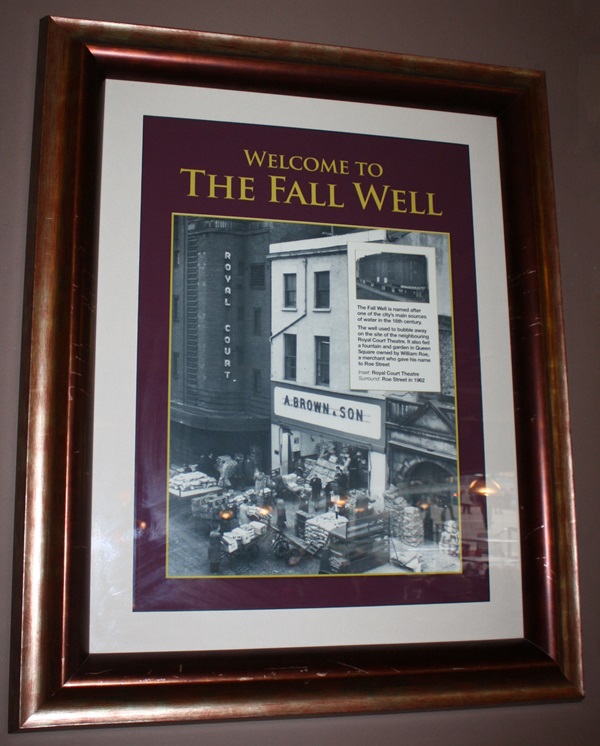
The text reads: The fall well is named after one of the city’s main sources of water in the 18th century.
The well used to bubble away on the site of the neighbouring Royal Court Theatre. It also fed a fountain and garden in Queen Square owned by William Roe, a merchant who gave his name to Roe Street.
Inset: The Royal Court Theatre
Surround: Roe Street in 1962.
A framed drawing and text about Lime Street in the 1890s.
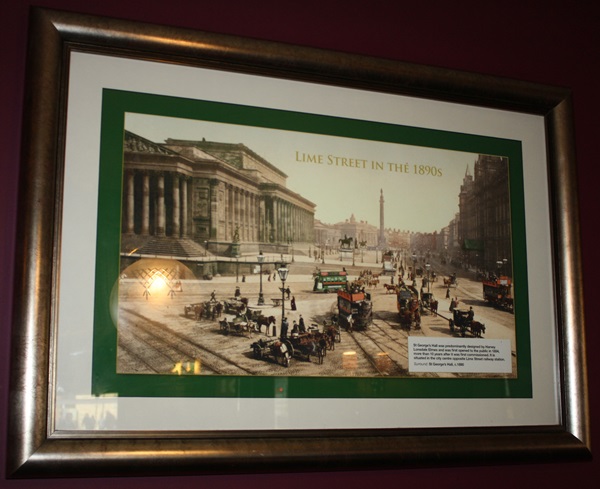
The text reads: St George’s Hall was predominantly designed by Harvey Lonsdale Elmes and was first opened to the public in 1854, more than 10 years after it was first commissioned. It is situated in the city centre opposite Lime Street Railway station.
Surround: St George’s Hall, c.1890.
A framed photograph and text about The Walker Art Gallery in 1890.
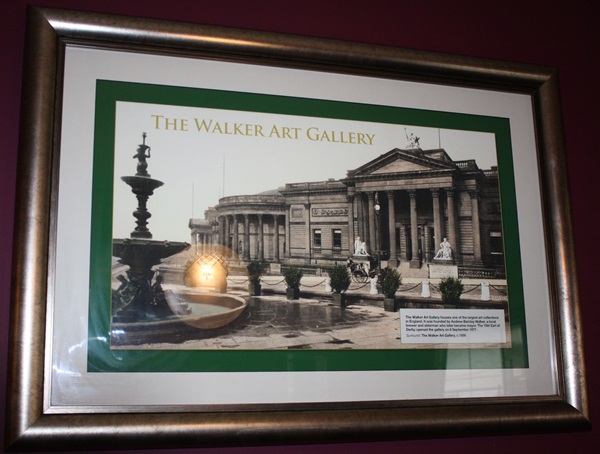
The text reads: The Walker Art Gallery houses one of the largest art collections in England. It was founded by Andrew Barclay Walker, a local brewer and alderman who later became mayor. The 15th Earl of Derby opened the gallery on 6 September 1877.
Surround: The Walker Art Gallery, c.1890.
Framed drawings and text about Florence and James Maybrick.

The text reads: James Maybrick was a prosperous Liverpool cotton merchant who lived with his American wife at “Battlecrease House” in Aigburth. He died in what was deemed to be suspicious circumstances, and his young wife Florence was convicted of poisoning him with arsenic. She spent fourteen years imprisoned, before a retrial acquitted her in 1904.
More than a century after his death, James Maybrick was named as a suspect in the notorious Jack the Ripper murders.
A framed photograph of The Empire Theatre in 1947.

A framed photograph of St George’s Hall 1906.
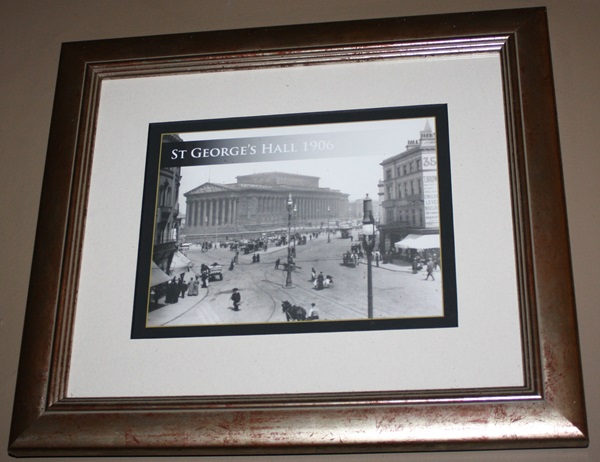
A framed photograph of Lord Street in 1900.
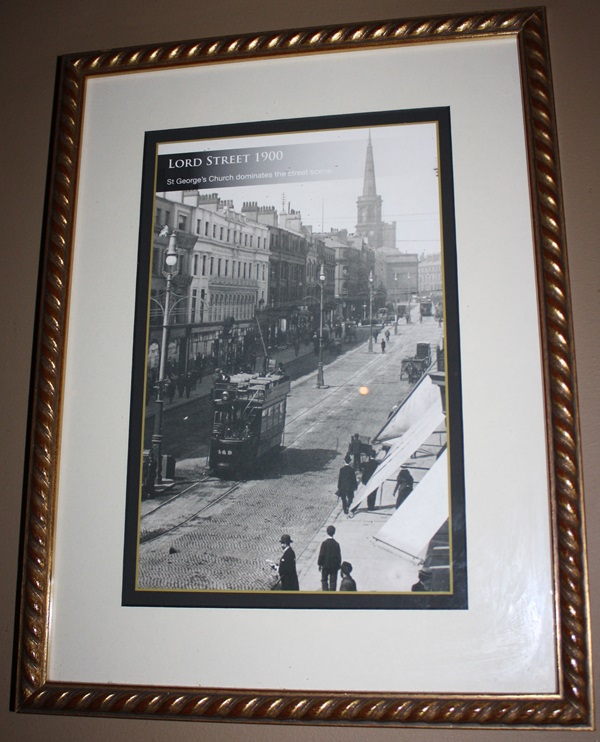
A framed photograph of Queen Square in 1920.

A framed photograph of St George’s Place in 1957.
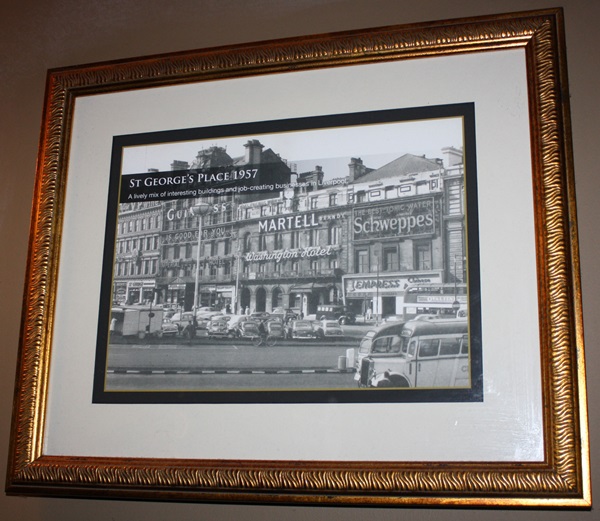
A framed photograph of St John’s Market in 1909.
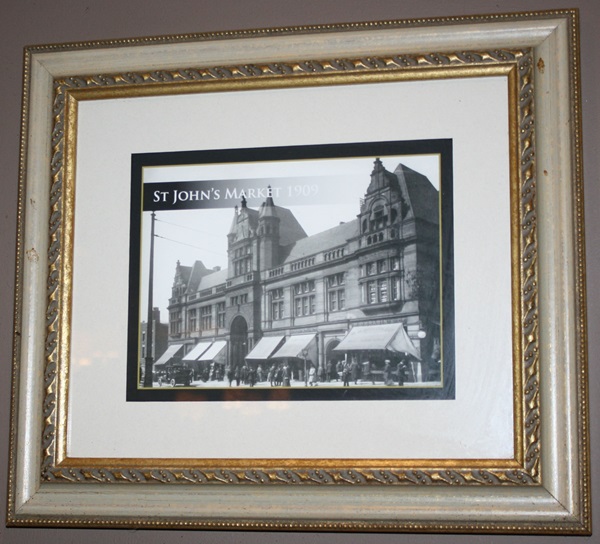
A framed photograph of Modern Second St John’s Market in 1981.
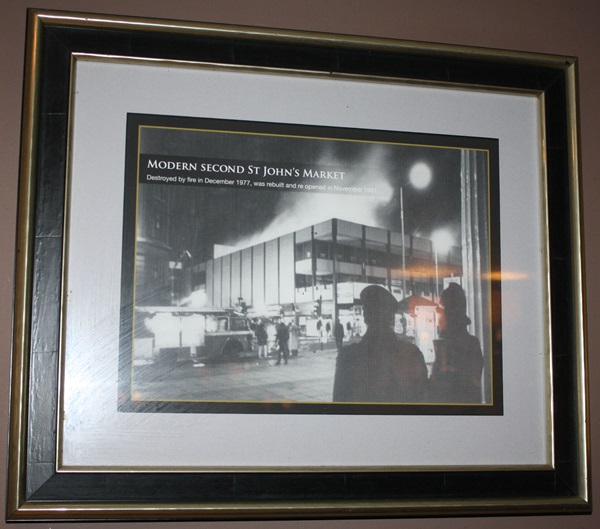
The text reads: Destroyed by the fire in December 1977, was rebuilt and re opened in November 1981.
A framed photograph of the Mersey Tunnel’s entrance.
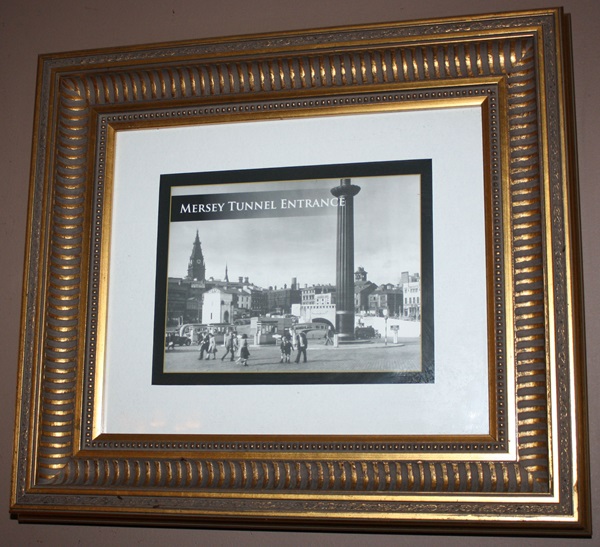
A framed photograph of Church Street in 1886.
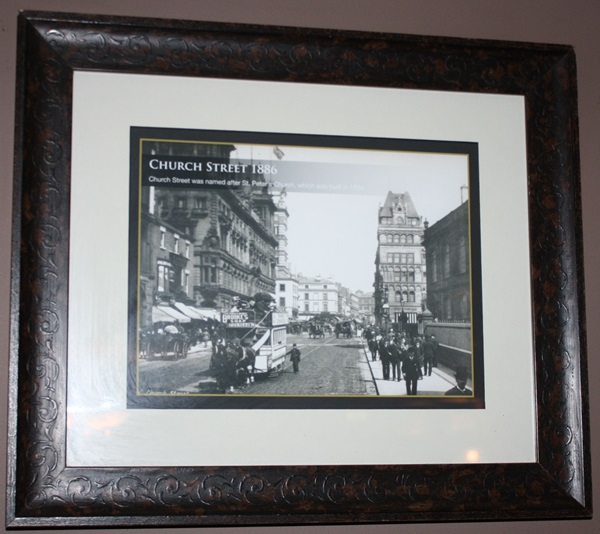
The text reads: Church Street was named after St. Peter’s Church, which was built in 1704.
A framed photograph of Roe Street in 1962.
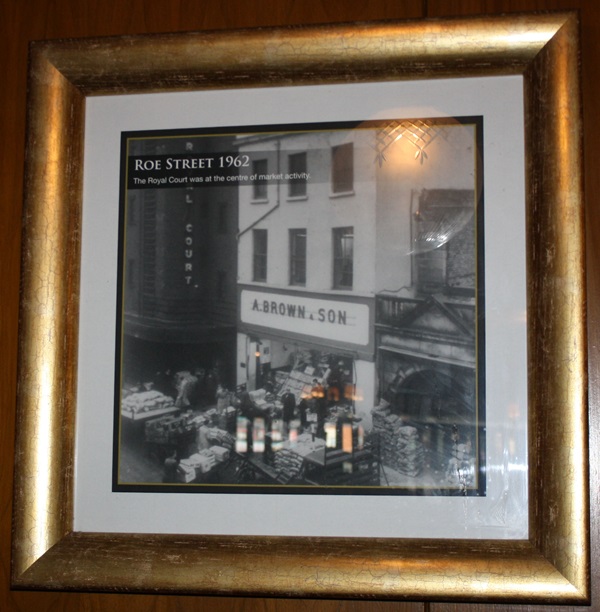
The text reads: The Royal Court was at the centre of market activity.
A framed photograph of the Liverpool Overhead Railway in 1956.
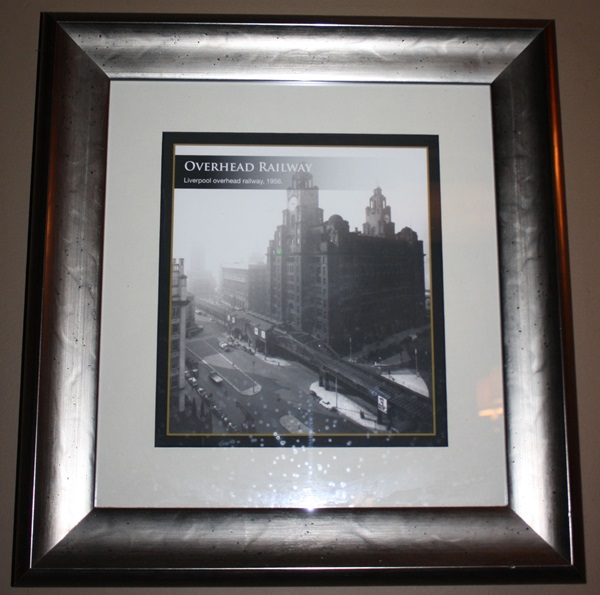
A framed photograph of men in a pub in Liverpool during 1949.

A framed photograph of a policeman on point duty in 1930.

The text reads: By March 1930, all Liverpool police point of duty had ‘dustbin’ type protection.
External photograph of the building – main entrance.
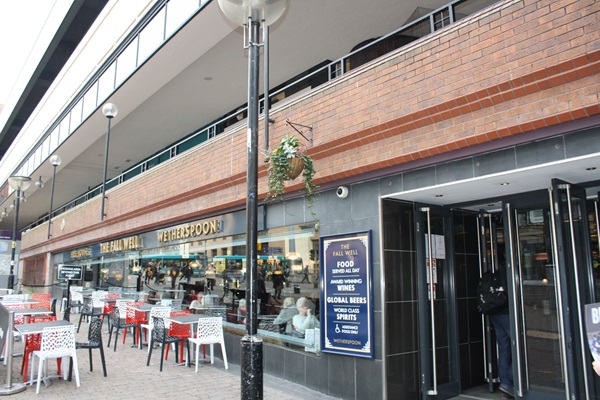
If you have information on the history of this pub, then we’d like you to share it with us. Please e-mail all information to: pubhistories@jdwetherspoon.co.uk